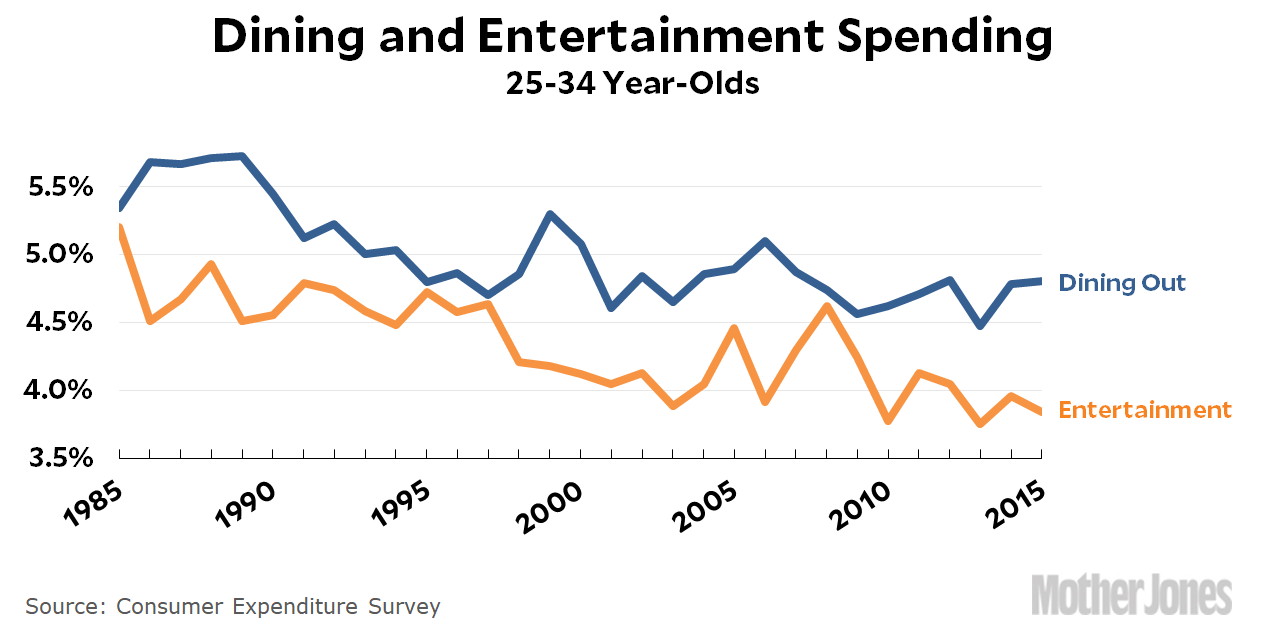A few days ago, Australian real-estate mogul Tim Gurner had some harsh words for millennials who are unhappy that they can’t afford to buy a house:
“When I was trying to buy my first home, I wasn’t buying smashed avocado for $19 and four coffees at $4 each,” he said. “We’re at a point now where the expectations of younger people are very, very high. They want to eat out every day; they want travel to Europe every year.
“The people that own homes today worked very, very hard for it,” he said, adding that they “saved every dollar, did everything they could to get up the property investment ladder.”
This prompted a snarky, avocado-centric Twitter meme for a while, and the next day the New York Times even tried to fact check Gurner’s claim:
According to the Food Institute, which analyzed Bureau of Labor Statistics expenditure data from 2015, people from 25 to 34 spent, on average, $3,097 on eating out. Data for this age group through the decades was not readily available….As for Mr. Gurner’s second suggestion — skipping the European vacation — there is indeed an opportunity for savings, but research suggests millennials are the generation spending the least on travel.
This is some strange stuff. In its current form, the BLS Consumer Expenditure Survey goes back to the 80s, so this data is indeed available through the decades. Still, at least this is an attempt to take Gurner seriously: he’s not literally complaining about avocados on toast, but about a cavalier attitude toward money in general. So let’s take a look at that. First, here are total expenditures for 25-34-year-olds:

As you can see, millennials spend a smaller proportion of their income than 25-34-year-olds did a generation ago. In the Reagan era, this age group spent 91 percent of their income. Today’s millennials spend only 81 percent of their income.1 Still, thanks to rising incomes their total expenditures clock in about $3,000 higher (adjusted for inflation) than young households in the 80s.
But do they spend a big part of that income on fripperies, like lavish vacations and expensive dinners out? Let’s look:

Three decades ago, 18-34-year-olds spent 10.5 percent of their income on entertainment and eating out. Millennials spend 8.6 percent. In real dollars, that represents a small decline. In other words, millennials are more frugal about dining and entertainment than past generations.
So what do millennials spend their money on each year? They may have $3,000 more in disposable income than young families of the 80s and 90s, but they also spend:
- About $1,000 more on health care.
- About $1,500 more on pensions and Social Security.
- About $2,000 more on overall housing (rent, maintenance, utilities, etc.).
- About $700 more on education.
If they’re not buying houses, this is why. It’s not because houses are more expensive: the average house costs about a third more than it did in the 80s and early 90s, but thanks to low interest rates the average mortgage payment is about the same or even a bit lower. But it’s tough to scrape together a down payment when you’re already running a tight ship on dining and entertainment and paying more than previous generations for health care, education, retirement, and student loans.
That said, I’ll add one more thing: our perceptions are probably a bit warped about this. Millennials who write about this stuff tend to live in media centers like New York or San Francisco or Washington DC, where housing is extremely expensive. Even with a decent income it’s hard to afford anything more than a cramped apartment. In the rest of the country things are different, but we don’t hear as much about that. Caveat emptor.
1The share of income not counted as expenditures includes taxes, student loans, credit card payments, savings, etc.














